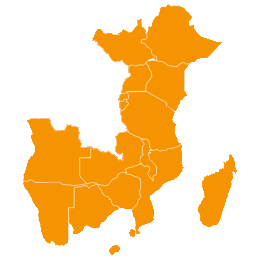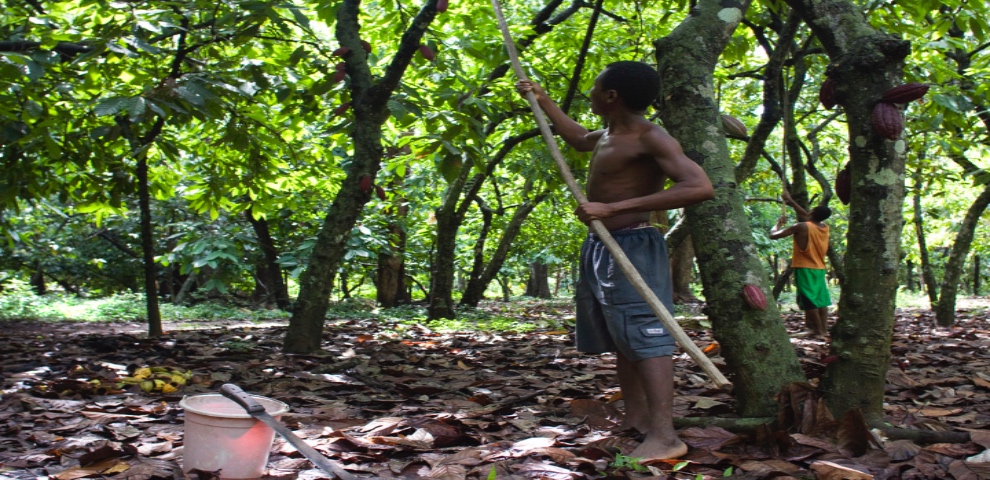Food trees
More than 90 nutritionally rich, underutilized indigenous tree and crop species identified across Ethiopia, Kenya and Uganda have boosted household dietary diversity for children and helped to combat micronutrient deficiencies.
BACKGROUND
Despite advances in overall agricultural production, approximately one billion people globally are chronically hungry – and this number is set to increase with the pandemic. Food trees have huge potential to provide a wide variety of foods and can contribute substantially to food and nutrition security.
WHAT’S INVOLVED
Food tree and crop portfolios :Portfolios provide documented, customized recommendations that are co-developed with smallholder farmers in response to their needs for seasonal food availability, nutrition and preferences for species for income or other uses.
Agroforestry innovation hubs and nurseries: Agroforestry innovation hubs serve as convergence points for trainings and distributing materials. They also ensure availability and access to an increased diversity of quality food tree seedlings
EXPLORE THIS SOLUTION
The food trees for diversified diets contributes to:
- Identifying and documenting nutrition-sensitive food tree value chains within smallholder farming and food systems
- Developing and disseminating nutrition awareness and agroforestry campaign tools

Countries involved
Kenya, Uganda
Project partners
European Unions, Kenya Agricultural and Livestock Research Organization (KALRO); Food Science and Technology Department of Jomo Kenyatta University of Agriculture and Technology (JKUAT); Feed the Children Kenya; World Vegetable Centre (WorldVeg) and SGS Laboratories.
Project dates
2016 – 2021
Share this solution
Bookmark this solution
BookmarkShow Full Solution
Summary
To nutritiously and sustainably feed the planet, healthy and diversified diets need to be made available. By implementing a climate smart agroforestry approach that integrates food trees providing nutrient-dense foods, this solution expands smallholder farmer communities’ diets and livelihood options in East Africa.
Challenge/Problem
Malnutrition in all its forms, including under-nutrition, micronutrient deficiency and over-nutrition, affects one in three people worldwide and is a major risk factor for non-communicable diseases. While the causes of malnutrition are complex, a frequent common denominator for all types of malnutrition is a nutritionally inappropriate diet. These diets, characterized by their lack of diversity of nutritious foods, are derived from food and agriculture systems that are more focused on delivering sufficient calories than providing a broad range of nutrients. Integration of food trees that provide nutrient-dense foods (fruits and nuts, seeds for protein and oils, leaves as vegetables) into existing crop farming systems helps diversify diets and achieve improved nutritional outcomes.
Solution
The lack of year-round availability of micronutrient-rich fruits and vegetables is among the main reasons for low nutrient intake among smallholder farmers in rural sub-Saharan Africa. To overcome seasonal food and nutrient gaps and diversify predominantly staple-based diets, World Agroforestry, with support from the European Union and IFAD, has developed an innovative approach for selecting ecologically suitable and nutritionally valuable food tree and crop species for production on farms: food tree and crop portfolios.
The portfolio approach delivers customized recommendations for cultivating a diversity of indigenous, underutilised, and/or exotic food tree and crop species in order to provide year-round nutritious foods and thus address food harvest and nutrient gaps. The approach involves household socio-economic and farm diversity surveys; food consumption and food security surveys using indicators such as dietary diversity and food intake; and group discussions to investigate community priorities for growing food for household consumption and income. A total of 5,141 beneficiaries have engaged with the project to date, including 3,171 women and 1,866 men.
In addition to filling harvest gaps, the portfolios address certain local micronutrient gaps by using food composition data to identify matching tree foods and crops. The approach involves a variety of tools that collect information on household socio-economics, food systems diversity, food security, food consumption patterns and nutritional statuses. The project has finalized eight site-specific nutritious food portfolios for Kenya and three site-specific fruit tree portfolios for Uganda.
The project is nutrition-centred but has significant climate and environmental linkages. For instance, in addition to their direct nutritional and food value, trees in diverse agro-ecosystems provide products (such as medicines, timber, fodder and fuel) and services (including carbon sequestration, erosion control, watershed management, soil fertility management and wild biodiversity conservation) that contribute to the resilience of resource-constrained households. Trees are also resilient regarding climate variability.
Results
More than 90 food tree and crop species have been identified across nine sites in Kenya, Uganda and Ethiopia, with an average of 30 species recommended per portfolio.
The portfolios not only support direct food production–consumption pathways but also diversify income-generating pathways by creating opportunities for nursery enterprises. Beyond supplying tree seeds and seedlings, nurseries could also sell surplus produce from the prioritized food trees once they fruit.
Improving household nutrition and increasing incomes of smallholders through diversifying food production are the important benefits from this project. Many households can meet their seasonal dietary needs through a combination of their own production on farm or from the market.
Lessons Learned/Potential for replication
- Diversifying location-specific species to address seasonal availability: The approach needs to be flexible enough to develop portfolios that take into account variations in species suitability, seasonal changes and farmers’ preferences. It is important to note that the portfolio is a recommendation. It may not be ideal for a farmer to produce all species included due to land, water or other restrictions.
- Beyond food production–consumption pathways: The portfolio approach provides a suitable entry point for promoting a direct production–consumption pathway to encourage greater food consumption and address dietary needs, but it should be combined with awareness campaigns on healthier diets.
- Supplying local markets: Production diversity, particularly of perishable foods, such as fruits, plays a crucial role. This is especially the case where infrastructure market connectivity is limited, as local production would supply local markets and provide nutritious and accessible foods to local communities.
Next Steps
To ensure sustainability, lead farmers, farmers groups, nursery businesses and schools have established demonstration plots, managed portfolios, and received technical training and information on the value of production diversity to meet seasonal food, nutrition and income needs.
The portfolio approach can be adapted to different locations with diverse agro-ecological conditions, as illustrated by the varying environments of project sites in Kenya, Uganda and Ethiopia.
Other donors and implementing partners have shown interest in replicating this innovation across other countries. A user guide and several papers have been published for interested partners.
Solution Video
Solution Additional Resources
Project websiteLast update: 26/07/2021


